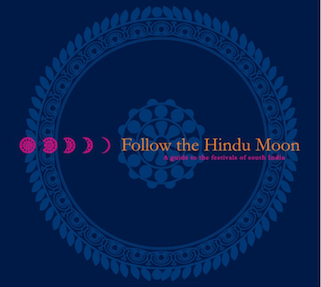|
The Indian Analyst
|
South Indian Inscriptions |
Part - I Miscellaneous Inscriptions From the Tamil Country I.- Inscriptions in the Vishnu temple at Ukkal No. 1 to 4 north & west wall of the same shrine No. 5 to 8 south wall of the same shrine No. 9 to 11 north wall of the mandapa No. 12 to 14 west & south wall of the same mandapa On the road from Conjeeveram to Wandiwash, at a distance of five miles south of Mamandur, lies the village of Kulambandal.[1] It contains a Siva temple, which is now deserted, but in tolerably god preservation. The approximate time of the foundation of this temple is settled by an inscription on its north wall, which is dated in the 12th year of the reign of Rajendra-Chola I. It records the grant of an allowance of paddy and gold to twenty-four dancing-girls, and states that the temple was built by the priest Isanasiva-Pandita, whose name is also met with in a Tanjore inscription of the 6th year of the same king (Vol. II. No. 9). The same wall of the temple at Kulambandal bears an inscription of the 22nd year of Rajendra-Chola I., and the south wall one of the 33rd year of Rajadhiraja. The ancient name of the temple, Gangaikonda-Cholesvara, is derived from a surname of Rajendra-Chola I.[2] The village of Ukkal[3] is one mile distant to the east of Kulambandal. In contains the ruins of an ancient temple of Vishnu, which I visited in 1893. Of the shrine itself, only the lower portions remain standing, and the mandapa in front of the shrine threatens to collapse at any moment. The bases of the shrine and of the mandapa bear seventeen inscriptions. Of these, fourteen were copied and are published below. The remaining three were omitted, as they are incomplete.
The
subjoined list shows, in chronological order, the kings to whose
reigns the Ukkal inscriptions belong.
According to the inscriptions, the ancient name of the temple was Puvanimanikka-Vishnugriham, i.e., âthe Vishnu temple of Bhuvanamanikya.â This word means âthe ruby of the worldâ and may have been a biruda of the unknown found of the temple. In an inscription of Rajaraja I. (No. 2, 1 2), the deity of the temple is called Tiruvaymolidevar, i.e., âthe god of the Tiruvaymoli.â This is the name of that portion of the Nalayiraprabandham, which was composed by Sathagopa, alias Nammalvar. The fact that, in the time of Rajaraja I., an idol was named after the Tiruvaymoli, implies that this work was considered holy already at that period, and hence that its author must have lived centuries before A.D. 1000.[4] The village in which the temple stands, bears the name of Ukkal in the inscriptions No. 4 and No. 10. In the two archaic inscriptions of Kampavarman (Nos. 5 and 8), we find the more ancient forms Utkar and Utkal. Other names or surnames of it were Sivachulamanimangalam[5] (Nos. 1, 2, 3, 6, 7, 11, 12 and 14), Vikramabharana-chaturvedimangalam (Nos. 2, 3, 4, 6, 7, 10, 11, 12, 13 and 14), and Aparajita-chaturvedimangalam (No. 1). These three surnames appear to be derived from birudas of royal persons. In No. 1, Ukkal is stated to have belonged to Pagur-nadu, a subdivision of the district of Kaliyur-kottam, while, according to other inscriptions, it formed a separate subdivision of the same district, which was one of the ancient divisions of Tondaimandalam or, as it was also called from the time of Rajaraja I., Jayankonda-Cholamandalam[6] (Nos. 4 and 10). The village of Ukkal was governed by an assembly (sabha or mahasabha), which was subdivided into several committees. These were âthe great men elected for the yearâ (Nos. 5, 7, 11, 12, 13 and 14), âthe great men in charge of the tankâ (nos. 6, 11, 12 and 13), and âthose in charge of gardensâ (No. 12). The transactions of the assembly were put in writing by an officer who had the title âarbitratorâ (madhyastha, Nos. 2, 3, 6, 10 and 12), and who is once called âan accountantâ (karanattan, No. 10). [1] No. 251 on the Madras Survey Map of the Arcot taluka. [2] See Ind. Ant. Vol. XXI. P. 323. [3] No. 252 o the Madras Survey Map of the Arcot taluka. [4] A hyma by Kulasekhara, another of the twelve Vaishnava saints, is quoted in an inscription of Kulotunga I. ; see Vol. II. p. 252, note 7. [5] Sivachudamani was a biruda of the Pallava king Rajasimhavarman of Kanchi ; se Vol. 1 No. 24, verse 12, and No. 31. [6] See Vol. II. p. 312.
| ||||||||||||||||||||||||||||||||||||||||||||||||||||||||||||||||||||||||||||||||||||||||||||||||||||||||||||||||||||||||







